How To Improve Posture: A Guide To Alleviate Neck Pain
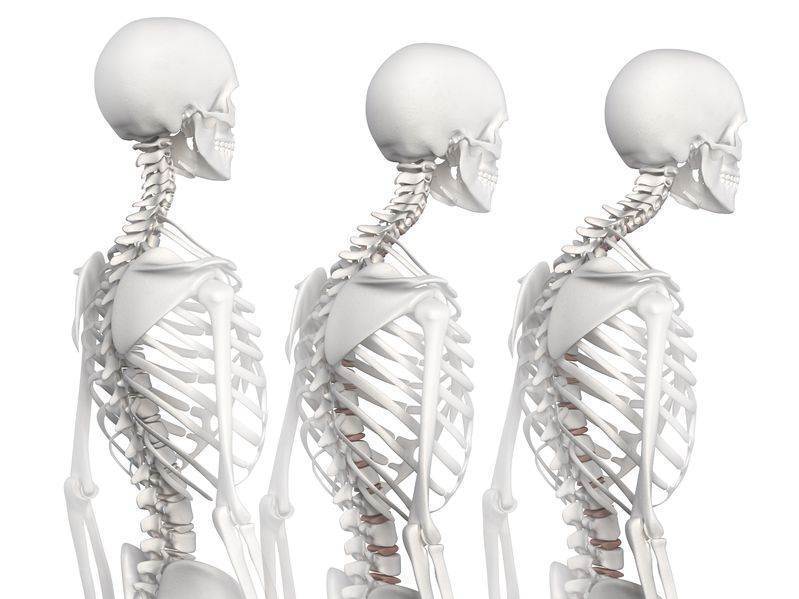
How to Improve posture, especially for those experiencing neck pain, stiffness, and headaches due to a rounded upper back, is crucial for overall well-being and confidence. This guide outlines effective strategies to address the common issue of a rounded upper back prevalent in today’s sedentary lifestyle.
Understanding the Cause: Muscle Imbalance
A rounded upper back often stems from muscle imbalance, with chest muscles being overly tight and the muscles along the spine too weak.
Stretching and Strengthing Is The Answer: How To Improve Posture
1. Stretching the Chest Muscle
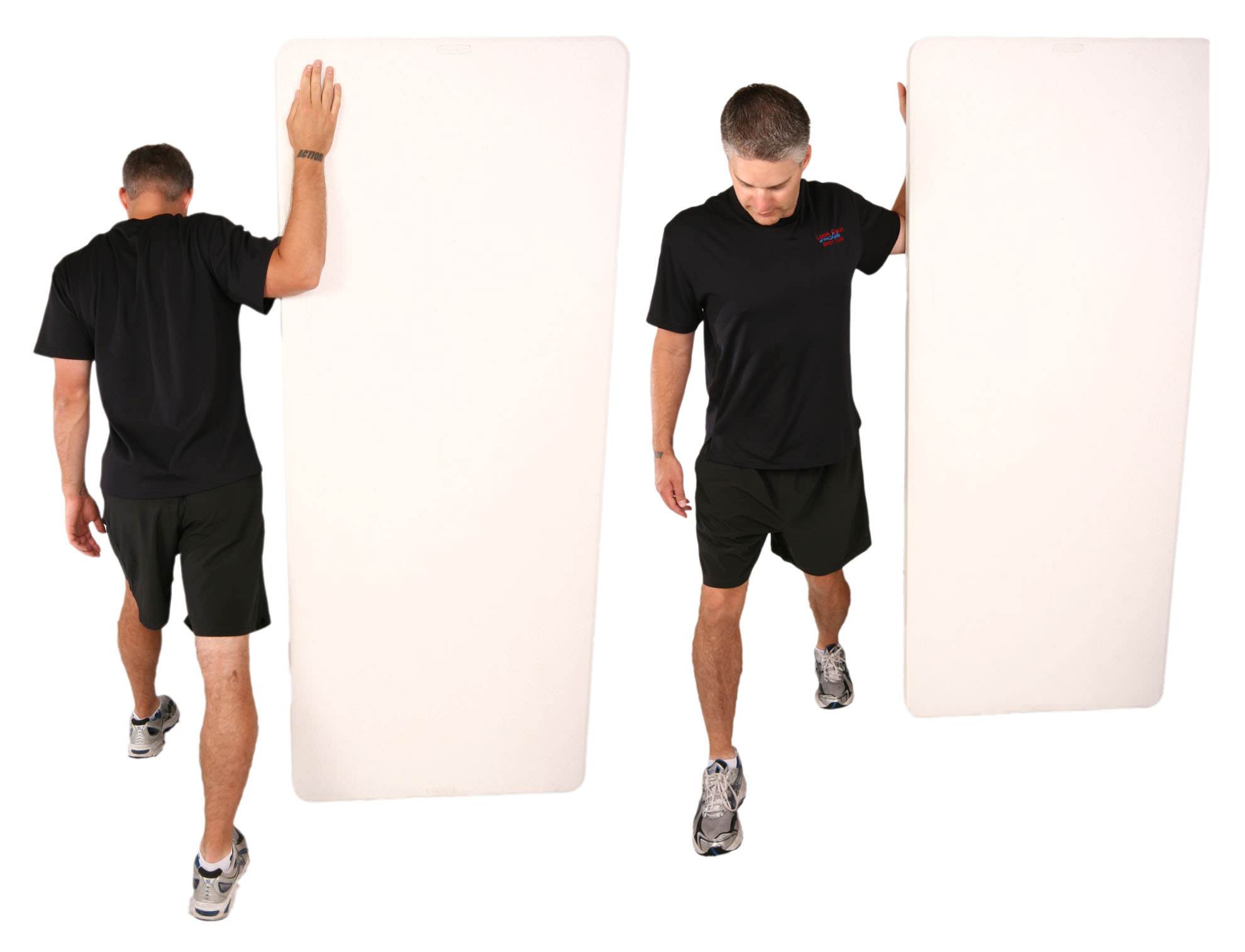
Pectoralis Minor Stretch
- Stand at a corner or doorway opening with your arm at shoulder height.
- Step forward.
- Rotate your body away if you don’t feel a stretch.
- Stretch for 30-60 seconds 3 times.
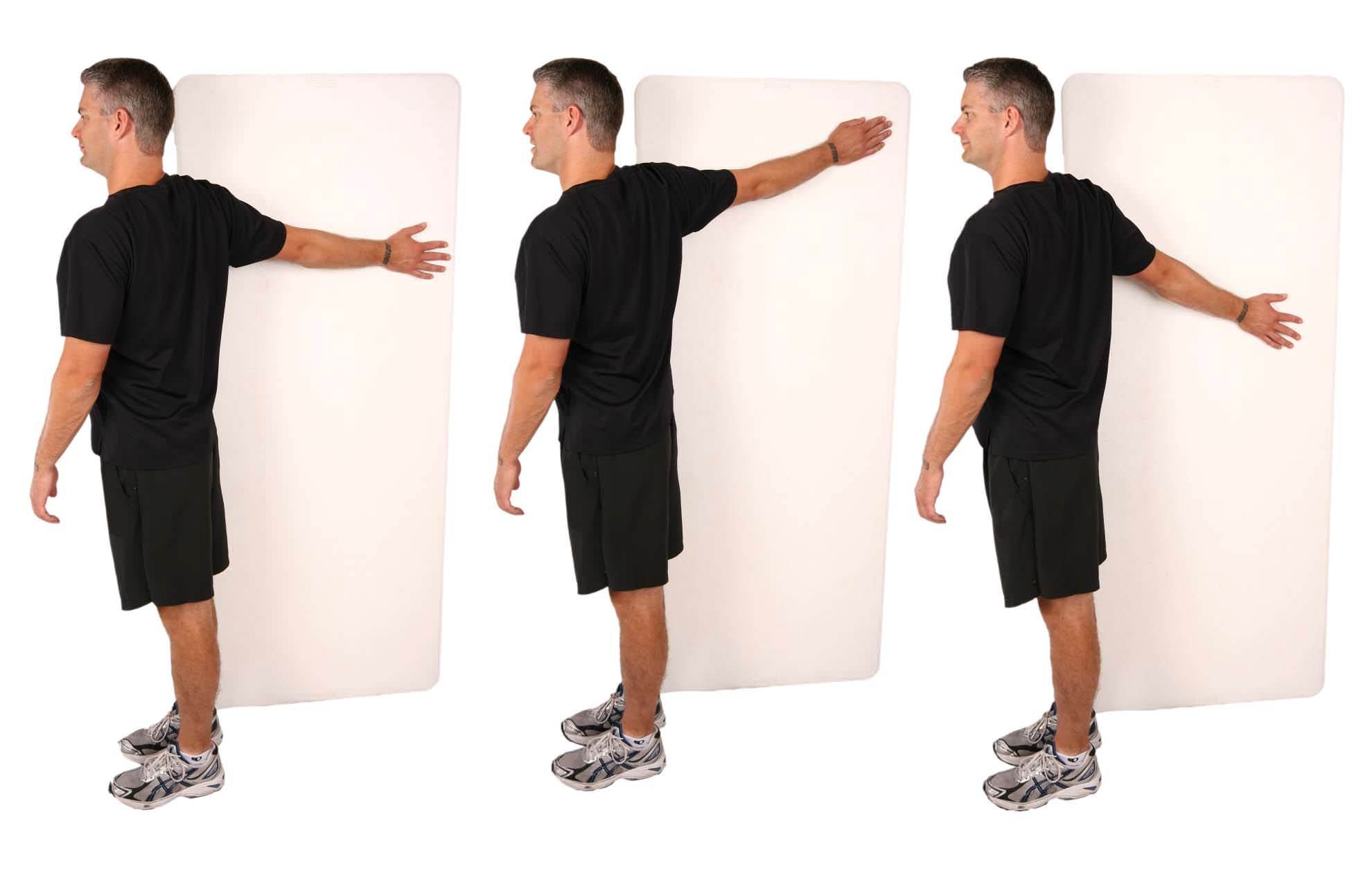
Pectoralis Major Stretch
- Stand next to the wall and extend your arm back.
- Rotate your body away from the wall.
- Stretch for 30 -60 seconds 3 times.
See Also: The 5 Best Exercises For Your Stiff Neck
2. Strengthening the Upper Back: How To Improve Posture
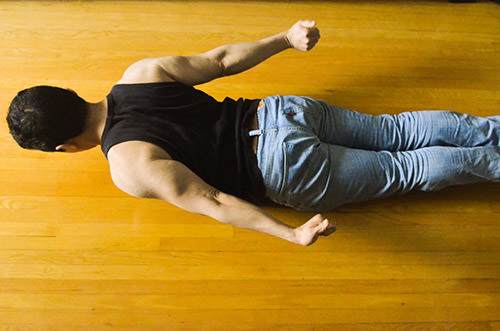
- Lie facedown on the floor.
- Contract your gluteus maximus (butt muscles) and raise your chest and arms off the floor.
- Point your thumbs toward the ceiling.
- Bring your shoulder blades together with a hard contraction, while pushing them toward your tailbone.
- Hold for 10 seconds 3 times. Work your way up to a total time of 60 seconds without rest.
3. Stretching Upper Back Ligaments: How To Improve Posture
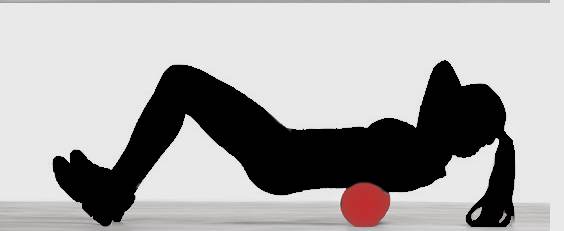
Foam roll extensions are a simple yet effective exercise designed to improve thoracic spine mobility and alleviate upper back stiffness. Here’s a brief guide on how to perform this exercise:
- Position the Foam Roller: Lie down on your back with a foam roller positioned underneath your upper back, near the shoulder blades.
- Support Your Head: Interlace your fingers behind your head to support your neck.
- Bend Your Knees: Keep your feet flat on the floor, knees bent, to stabilize your lower body.
- Extend Over the Roller: Gently extend over the roller for a deeper stretch for 5 seconds
Performing foam roll extensions regularly can help reduce tension, increase spinal flexibility, and improve overall posture.
Routine: Perform these exercises four times a week, incorporating a “Wall Posture Check” before and after stretches to monitor progress.
Wall Posture Check: How To Improve Posture
Correct Posture Should Be
- Touching the wall at the: Hips, Shoulder blades, back of your head.
- Your flattened hand should just fit between your lower back and the wall.
- Your head should touch the wall flat without having to extend your neck backwards. In other words, your nose should not move up or down so you can reach the wall with the back of your head.
Identifying Your Posture Type:
- Recognize patterns like Kypholordotic, Sway Back, or Forward Head posture. Regular exercise can lead to improvements.
Tracking Progress:
- Share your progress and experiences with these exercises by sending photos or comments. Your feedback is valued and contributes to a community of individuals dedicated to improving their posture.
Conclusion:
By dedicating time each week to stretch and strengthen key muscle groups, you can significantly improve your posture, reduce discomfort, and boost your confidence. Remember, consistency is key to seeing changes, and engaging with a community can provide additional support and motivation.
Tell us what you think in the comments below and like us on Facebook. I will answer all questions in the comments section here at this downtown Toronto Chiropractic clinic.
Related Categories: Headaches, Hip, Neck Pain, Posture, Shoulder, Stretches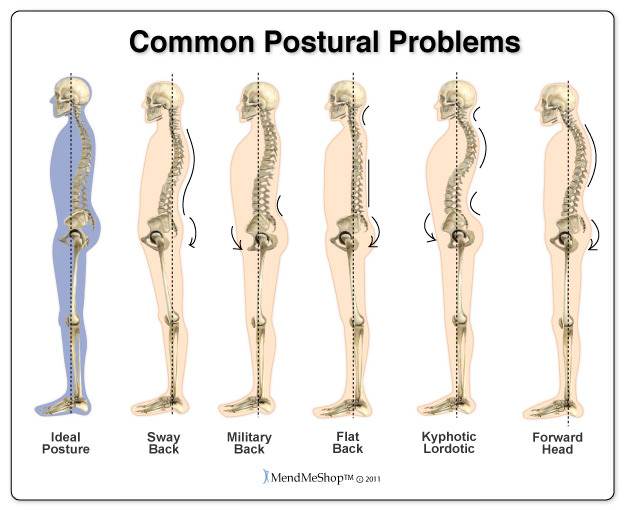




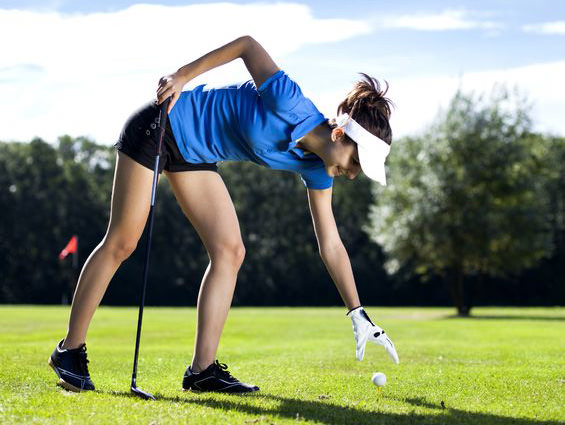

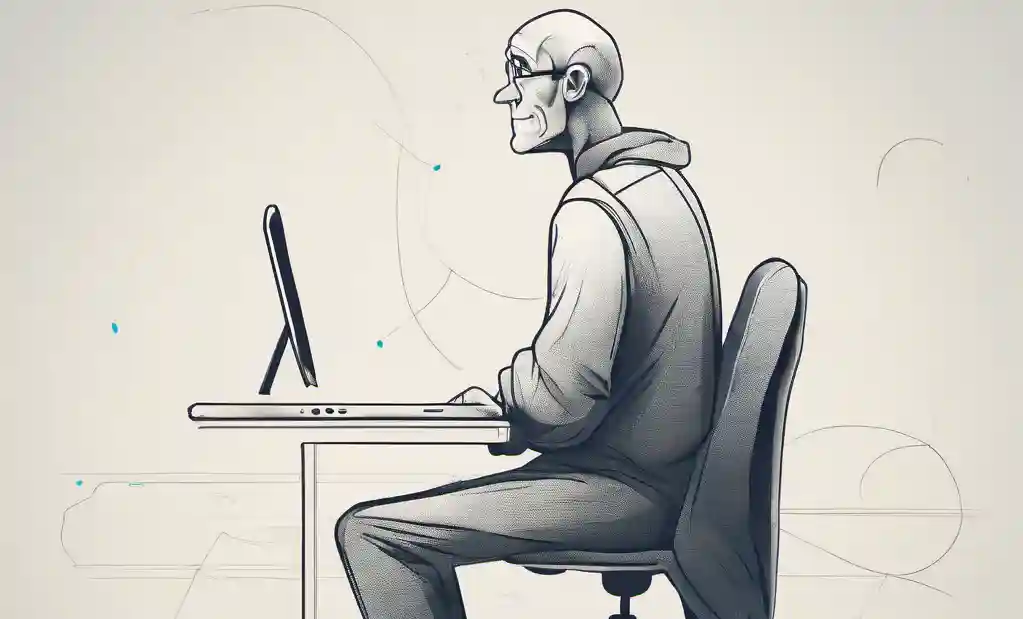

Dear Dr.Ken, your post is really informative. I am 36, had tendonitis which lead to bursitis and right shoulder pain with C4-C5 disc bulge. Someone recommended Gonstead Chiropractor and I have been going for almost a year now. Everytime he adjusts right sacrum, mid back (L4/L5) and Upper back(T something) and right neck. He does not give any strengthening exercises. I started standing at work and now after a year every morning wake up with severe right heel and knee pain. I can neither stand nor sit for too long. Very frustrating. I would visit you if I lived in Toronto but cannot. Are there any exercises I can safely do without worsening/adding new problems that would help me. Thanks very much in advance for your time
Author
Thanks for your question AJS. Often times neck pain problems will cause shoulder pain. You need somebody that will treat the problem and not use a cook book (meaning using the same treatment each time). This method will only get some of the people better. Also you need exercises like you say. https://www.bodiempowerment.com/cervical-disc-herniation-best-exercises-help-sore-neck/
If the pain increases or any symptoms like numbness, tingling or pain goes further down the neck to the shoulder or further down the shoulder to the upper arm than you are getting worse. If worse you should immediately stop the exercises.
If it turns out to be just a shoulder problem than you need a different set of exercises. If the shoulder gets worse or better you know that the problem is coming from the neck.
Hope that helps your shoulder pain and neck pain.
I think I’m at forward head or kyphotic lordotic … I just did day 1 of your stretches and exercises.,. Do you think at 39 years old my posture problem can be corrected?
Author
Thanks for your question Joyce. Your posture can be improved to a certain extent but not perfected. Give them a try for a few months and see you do. I would do the exercises everyday.
Hope that helps your posture.
Dr. Ken, Thank you so much for these exercises and tips, my shoulder and neck have improved so much and I have ROM I haven’t had in a long time. I have tendinitis and bursitis on my MRI along with C8 herniation. It seems my ulnar nerve is giving me trouble still. I have constant right arm pain especially when I bend my right arm in excess- like typing you this comment. It really hurts above my elbow, down my arm and a annoying, constant, aching, numbness into my pinky finger. Do you have any exercises to help ulnar nerve pain to avoid surgery?
Author
Thanks for your question Deb. Assuming the C7 T1 disc is causing the problem pushing on the C8 nerve than could try these exercises. https://www.bodiempowerment.com/cervical-disc-herniation-best-exercises-help-sore-neck/.
Remember that any exercise can make you worse. Especially these ones. These exercises should be supervised by health professional. If the pain, numbness, or tingling gets stronger or goes further down the finger or becomes more constant than you are getting worse so should stop the treatment.
Hope that helps your possible C7T1 disc herniation.
Hi, I’m currently working on the exercises in your other post about hyper lordosis. Like the girl in the picture there, I have a straight neck but a rounded back. That post suggested to look at the post 4 Upper Back Exercises to Improve Posture, which then directed me here. Just curious…will the exercises on this post harm my neck from its current natural, straight posture, or will it, like I want, only help my upper back?
Thanks so much…just curious
Author
Thanks for your question Cally. The exercises in this article won’t harm your current straight posture. It will reposition your upper back under your neck.\
Hope that helps your posture.
Thank you so much for your reply! My postural appearance means a ton to me
Author
You are welcome Cally.
I have forward head problem and i m 18 years old .. Help me out how to get rid of this thing ?? and headache is permanent .. Please help
Author
Thanks for your plea Richa. I would consult your doctor if you have a permanent headache or a constant headache. While a forward head does cause many people headaches you could be suffering some other medical problem. Better to check it out first then if it’s Ok I would try out the exercises to improve your posture.
Hope that helps your posture.
Can i do these exercises twice in day for everyday? Sir i do it every day fthan from your point of yoy how many time it take to correct my posture? And sir i saw this to 2 doctors here in india and thay said it’s normal i mean its foolish i hav a kyphosis surely and my back is more rounded and and i feel pain. I have both kyphosis and lordosis so what i have to do now sir? It bother me in boxing and in my social life I’m only 19 years old plz help me sir
Author
Thanks for your question Jay. Everybody has a kyphosis and lordosis in their upper back and lower back respectively. Your doctor says it’s normal and it very well may be. I can tell you that when you have too much of a kyphosis it’s called hyperkyphosis and too much of a lordosis in the lower back is called hyperlordosis. If you do have these problems these exercises are often helpful.
Chiropractors by their training have look at posture everyday. Those that do something everyday and are trained for it are generally better at it. Although there will likely be some exceptions.
Doing your exercises twice a day will be helpful. I have no idea how long it will take as I haven’t examined you.
Hope that helps you posture.
Hello sir my name is jay ahir, I’m a boxer
My problem is i have kyphosis and little lordosis too. I’m suffering from pain after or during practice. My spinal cord band more than usual and feeling pain after 5 min of straight posture.
I’m a very good sports man running 21 twice in week, but this problem bother me
Plz tell me sir what to do
I can do that exercise daily for an hour but i don’t know what to do
Plz explain me sir
Author
Thanks for your question Jay. You can do these exercises plus these exercises. https://www.bodiempowerment.com/posture-correct-your-exaggerated-low-back-arch/
Remember that any exercise can hurt you so they should be supervised by a health professional.
Hope that helps your posture.
Ken, I think my back is curved but i dont know much about it and when i tried the standing against a wall my hips, shoulder blades and head touch the wall but their is too much space between my lower back and the wall, But from looking in the mirror i think my upper back is curved to because it goes further back than my butt.
Is my back curved on the lower and the upper or only the lower? And which exercises should i do?
Author
Thanks for your question Tim. You likely have both too much of a low back and mid back curve but only an exam can confirm that. You should do these exercises if that is true. https://www.bodiempowerment.com/posture-correct-your-exaggerated-low-back-arch/
Obviously I can’t tell for sure as it is only what you say and you may be standing in an exaggerated way etc…
As wit any exercises they can cause you pain. You should have these exercises supervised by a health practitioner.
Dear doctor,
I have been suffer from Ankylosing spondilysis more than 15 years, now I am 46 , and this effecting my posture a lot make me forward neck , I try to do several exercise to release my muscle, but it make me huge pain around lower back , due to I have AS can I do above exercise.
one more that my lower part from hip downward to leg is to stiff I am not able to bending my upper part down to 90 degrees is there any exercise that will help me to release the stiffness of my leg muscle link to the back
appreciate your advice sir.
rgds,
Dayanand Tiwari.
Author
Thanks for your question Dayanand. Ankylosing spondylitis is a condition where there is inflammation of the ligaments that attach to the bones which eventually become calcified and fuse the bones together. Sounds like the bones have actually fused together already. There is no way to unfuse the vertebrae even with surgery.
No amount of exercise can change your posture although stretches can help relieve symptoms for a short period of time.
You can try the first 3 exercises to see if they will help. Remember even if they help the effect will be very temporary.
You should these exercises supervised by a health care practitioner as any exercises can make you worse.
Hope that helps your Ankylosing spondylitis to a certain extent.
I can only imagine how prevalent upper back and neck pain will become for the millions of people who are constantly texting on their smart phones. There is even a term for it now – “text neck”
Author
Thanks for your comment. Lots of people do have neck and upper back problems. From my own experience with patients in the financial district of downtown Toronto, I find most people that come in with neck pain and upper back pain is due to posture from sitting all day at the computer. The smart phones don’t help.
Hope that helps.
Thank you. I am very impressed how accurate you are. Your information is most effective. Wow.
Author
Thanks for your comment Linda. Hope this article improve your upper back posture.
Ken, many thanks for your articals, very informative, however I have a very straight thoracic spine and i rarely find any information on this condition, with an addional injury to the muscle there it tends to cause pain. Do you have any tips for this condition, straight or flat thoracic spine.
kind regards
Richard
Author
Thanks Richard for your question. When you have a straight back this puts a lot of pressure in the transition areas of the spine. Basically the base of your neck where your mid back end and your neck starts. Also where the mid back ends at the top of the lower back. For most people that is where the curve in your lower back starts.
Sitting is the worst and standing is usually a little better but still strained given enough time. It is very difficult to increase the curve in your mid back. You would have to do daily “cat” part of the cat cow exercise. https://www.bodiempowerment.com/herniated-disc-part-2-the-best-exercises-for-your-herniated-disc/
Hopefully that helps your straight thoracic spine.
Hi there. I have been experiencing pain on & off mostly on, through my left scapula, arm and chest. Sometimes when I sneeze a have a “pinch in my chest or just under the scapula. This started about a year ago and I went to the hospital and had all kinds of tests done with results indicating that I am extremely healthy, I’m 47 years old.
I started going to the chiropractor and got some relief the symptoms. they come and go and presently they are back, and when touch the area near the centre of my left chest, its sore to the touch. I find when I sit as straight as possible the symptoms subside, and then return again. My posture has improved since I started going to chiro, as could not straighten my shoulders before. I still go to the chiropractor.
Are you familiar with what I have described and do you have any suggestions?
Author
Thanks for your question Zoey. You have a disc bulge in your thoracic spine. When you sit slouched it put your thoracic spine or mid back in a forward position. Given enough years of slouching and weak cartilage the disc weakens further rupturing the out rings. When this happens you start to feel it each time the disc bulges. When you sit up straight you take the pressure off so you feel better. When you slouch it puts more pressure on the disc. Since the disc can press on the nerve it can push on the nerve going to the chest or in the scapula.
That’s my opinion anyways without examining you. Try these exercises and stay with your chiro.
Hope that helps your disc. I say this for educational purposes only.
Thank you! I researched what you had written “disc bulge in thoracic spine” and YES the symptoms all match exactly.
I have tried a the exercises today and noticed my posture change. I am going to book an appointment to come see you tomorrow!
Author
You are welcome. I’ll see you tomorrow then.
Thank you for a great article, I will definitely try the exercises. I am a 50 year old woman and I’ve had back pain on and off for years, however the last year has been great. I’ve shoveled snow, planted flowers etc. etc. and have had no problems. But then out of the blue I experienced tingling, numbness and the feeling of “heat” in my left leg when I lie on my left side, sometimes when I lie on my back or front and if I sit for too long, especially on a hard surface. If I don’t move or stand then the feeling rapidly gets worse and then it takes a long time to go away. Standing is fine so I have set my computer up on a tall stereo stand and this seems to help. My back felt great at first but I think always lying on my right side at night is throwing things out of whack and I sometimes have pain in my upper back after sleeping. This has been going on for 2 months. The doctor recommended a physiotherapist. The physiotherapist told me to stretch the muscles in the front of my thigh but if anything this seems to make it feel worse, so I went to a chiropractor. The chiropractor had me get xrays and pointed out the excessive curve in my lower spine, rounded upper back and head tilt forward, I guess I have a Kyphotic Lordotic posture. He also pointed out there was a very slight disc bulge and apparently I have a problem with where the front of my pelvis is joined, the one side is slightly higher than the other side. The chiropractor recommended I come for adjustments, but after 3 weeks my leg isn’t any better and if anything it feels worse after the adjustments (today it throbbed and tingled for about the next 10 hours). I also go in for the appointment with my back feeling fine but once I come out my upper back is sometimes quite soar. Two questions; if my posture is poor will things have to “get worse” before they get better, ie is it normal to experience back pain, that you didn’t have before, after an adjustment, while everything starts to go back to where it should be, and second when I asked about exercises he said I should just walk for 30 minutes a day. I know walking would be good for me (I am about 35lbs over weight) but I was looking for something more like what you’ve suggested. Are there any other exercises that you would recommend for my leg condition. Any help would be greatly appreciated, I feel like I haven’t slept for more than a few hours in weeks and I am so afraid it will get worse.
Thanks in advance, Sam
Author
Thanks for your question Sam. Your body prefers extension so here are the exercises for you. https://www.bodiempowerment.com/herniated-disc-part-2-the-best-exercises-for-your-herniated-disc/
If the exercises give you more pain or increase the symptoms further down the leg. eg. numbness, tingling or pain then you you should stop the exercises.
Hope that helps your possible disc herniation. (this is for educational purposes only)
Worthy advises ! I am lookinf for exercise for pain in Left leg above knee ( Between Knee and Thigh).
Sohail Mandhai
mandhaicorporate@yahoo.com
Author
Thanks for your question Shoahil. You haven’t said why you have this pain or provided a lot more detail so I cannot give any educational advice. Why don’t you write a lot more about your pain. Think about any doctor would need to look at you and give you advice.
Thank you so much!! these are great exercises!!
Hi Dr. Ken.
I am an active, athletic and healthy 49 year-old woman. I’m 5′ 8″ and 125 lbs.
About a year ago I noticed that my upper spine protrudes at the base of my neck. When I stand as straight as possible, the bumps are still visible.
My spine looks somewhat like the photo on this page, illustrating cervical disc herniation. I am wondering if this is my condition. Fortunately I don’t have any discomfort – no pain or numbness.
I am aware that I tend to slump and I make an effort to maintain good posture. I’m going to try the exercises you recommend for better posture. Is there anything else you recommend that might help to reduce this condition?
Also, would you recommend having an x-ray?
Thank you in advance for your time and any advice you can offer.
Amy Heffner
Author
Thanks for your question Amy. Try these exercises as well. https://www.bodiempowerment.com/advanced-posture-exercises/
Let me know how you get on after a couple months. Make sure you do the exercises everyday. Some of the exercises are duplicates so obviously you only need to do them according to the instructions but doing more won’t hurt.
Hope that helps improve the bump at the base of your neck.
Hi dr ken.. I just read your articles.. I have a kyphotic lordotic posture and head forward but i also have c4,c5 disc bulge..
So is it okay if i do these upper and lower back exercises and do i need to do only these 4 exercises or those lower nack exercises as well??
Waitinf for your reply.. Thanks
Author
Thanks for your question Shweta. I recommend that you do the exercises in this article and here: https://www.bodiempowerment.com/posture-correct-your-exaggerated-low-back-arch/
Hope that helps your upper back posture and lower back posture.
When I do the pectoralis major stretch, it just feels like I’m stretching my arm muscles. What am I doing wrong?
Author
Thanks for the question. Try changing the angle of the arm so it is higher or lower against the wall till you feel it in the chest.
Hope that helps your Posture for your upper back.
Hi Dr. Ken,
I’ve just read both this, and your article on correcting an exaggerated lower back, and both are great articles, really easy to understand.
Unfortunately I fall into the kyphotic lordotic category, and was wondering if I should do the four exercises above, as well as the ones on the lower back article?
Also, when I lay on my side, and arch my lower back, it makes cracking noises in my loser spine. Is this normal?
Thanks!
Another thing Doc is that when I place my feet hips and shoulder blades against the wall, my head is still quite forward.
Author
Thanks for your question Nathan. Than you should do the exercises in this article. Hope that helps.
Author
Thanks for your question Nathan. You should do all the exercises for the upper back and the lower back. Yes it’s normal for people that self “crack” their joints or people that simply have looser joints to have cracking noises in their lower back.
Hope that helps your upper back posture.